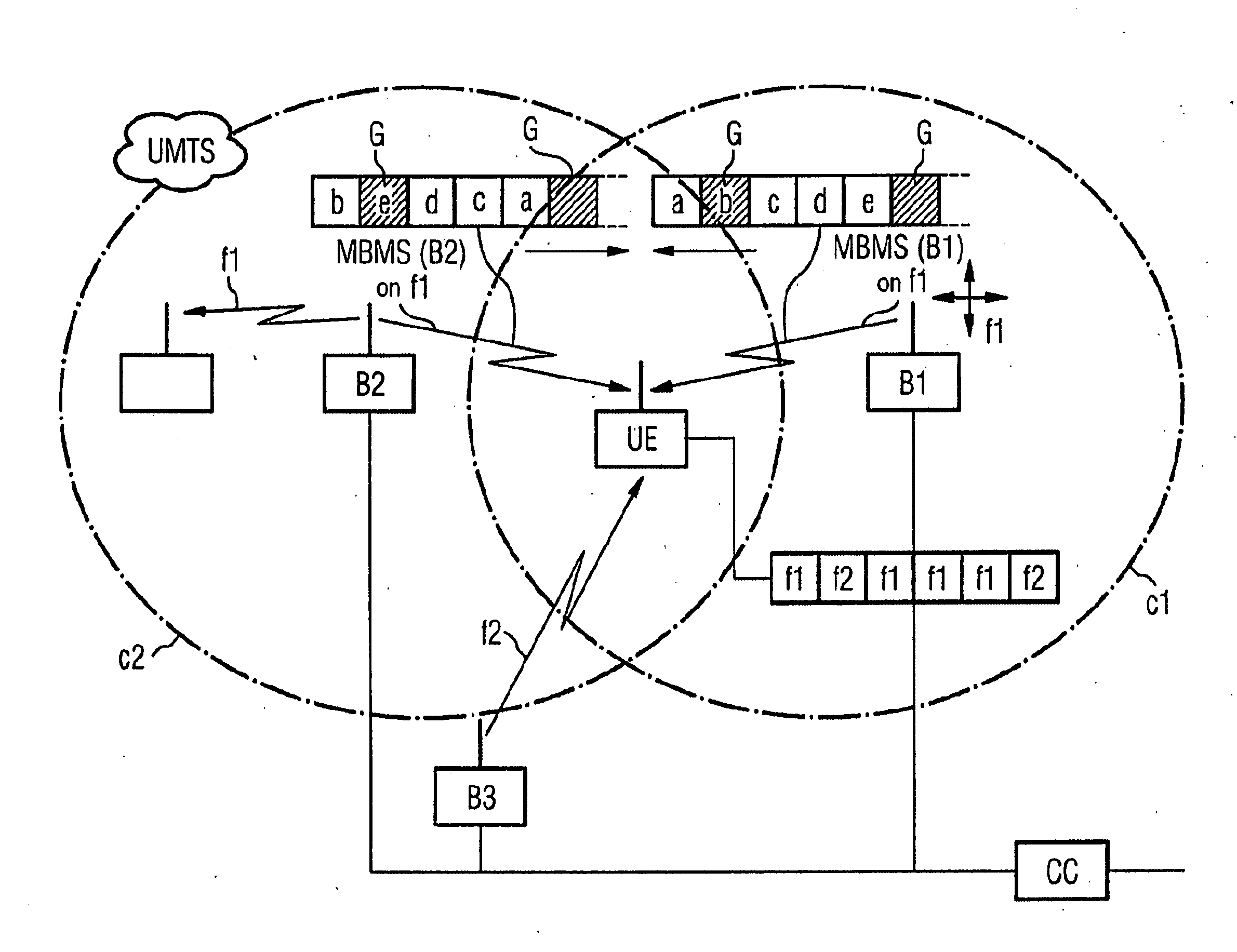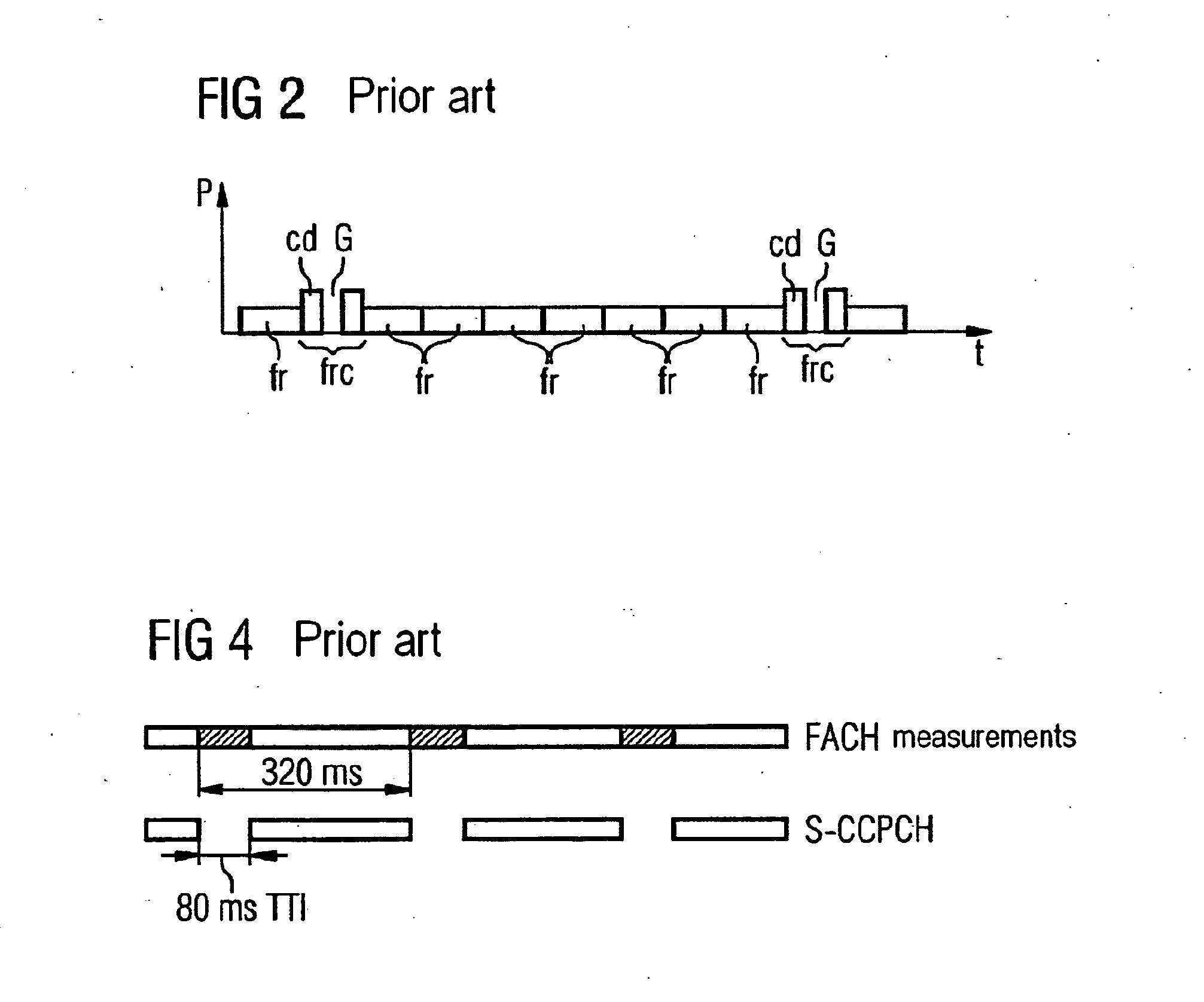Method for Receiving Data Sent in a Sequence in a Mobile Radio System with Reception Gaps
a mobile radio system and data sequence technology, applied in data switching networks, frequency-division multiplexes, site diversity, etc., can solve the problems of strong interference with gsm measurements, data loss occurs during reception gaps, and the physical channel (s-ccpch) used for mbms does not support compressed operating modes (cm)
- Summary
- Abstract
- Description
- Claims
- Application Information
AI Technical Summary
Benefits of technology
Problems solved by technology
Method used
Image
Examples
Embodiment Construction
[0038] A selective combining (SC) reception by a subscriber station UE is preferred. For this purpose the same data content, i.e. the same data or data packets, is sent in adjacent sectors and / or cells by more than one base station to a subscriber station. In this case no restrictions are imposed in respect of the synchronization of the data itself. The subscriber station performs inter-frequency or inter-RAT measurements in a known manner in, for example, the compressed operating mode according to UMTS and cannot receive all the data on one MBMS channel. However, the data which was sent and not received during the measurement gaps or, as the case may be, reception gaps is reconstructed. In addition to the possibility of a forward error correction (FEC) mechanism known per se, this is realized in that the data or data packets are sent in adjacent and overlapping sectors and / or cells with an offset or at times that are interleaved with respect to one another. This enables the subscri...
PUM
 Login to View More
Login to View More Abstract
Description
Claims
Application Information
 Login to View More
Login to View More - R&D
- Intellectual Property
- Life Sciences
- Materials
- Tech Scout
- Unparalleled Data Quality
- Higher Quality Content
- 60% Fewer Hallucinations
Browse by: Latest US Patents, China's latest patents, Technical Efficacy Thesaurus, Application Domain, Technology Topic, Popular Technical Reports.
© 2025 PatSnap. All rights reserved.Legal|Privacy policy|Modern Slavery Act Transparency Statement|Sitemap|About US| Contact US: help@patsnap.com



